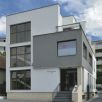Romania
Bucharest
Romania may officially be classed as an Eastern European state, however in its capital city Bucharest, Romanian, Balkan, European and Middle Eastern cultures converge to create a truly unique setting.
Bucharest seems to have unfairly earned a bad reputation from some travellers. Whilst the city might have been a little slower than the likes of Prague and Budapest with regards to post-communist re-development and many dowdy communist-era style buildings can still be seen, the city nevertheless has much to offer. Indeed there’s plenty of charm and class to rival other Eastern European cities, you just need to dig beneath the surface a little.
Walking along the wide, tree-lined boulevards, that once earned the city the nickname “little Paris”, you’ll take in the beautiful, varied and, in some cases, romantically crumbling architecture.
The city centre has a mixture of medieval, neoclassical and art nouveau buildings. There are also a number of ‘neo-Romanian’ constructions dating from the beginning of the 20th century as well as a collection of modern buildings from the 1920s and 1930s. Of course there’s also the obligatory communist era structures, which as symbols of the country’s poignant history should not be overlooked as cultural landmarks. Whilst many examples of modern architecture, new office buildings and skyscrapers, complete the landscape and illustrate how dynamic the city is becoming.
One of the city’s most notable landmarks is the iconic Palatul Parlamentului, the largest parliament building in the world. Originally built during communist rule it now houses the Romanian Parliament and the National Museum of Contemporary Art. Then there’s the Romanian Athenaeum building, considered to be a symbol of Romanian culture, which since 2007 has been included among the Label of European Heritage sites.
If you venture off the grand boulevards you’ll find a number of ancient yet breath-taking 17th and 18th century Orthodox churches, leafy squares and attractive parks. The most notable church, and a must-see whilst in Bucharest, is the Stavropoleos Church, a beautiful Eastern Orthodox monastery, built in the enchanting Brâncovenesc style.
The city boasts a great and versatile mix of museums and galleries featuring both classical and contemporary Romanian art, as well as selected international works. The largest collections can be found at the well-renown National Museum of Art of Romania. Other interesting venues include the Museum of the Romania Peasant, the National History Museum and the Military Museum. The Zambaccian Museum Zambaccian, which is situated in the former home of art collector Krikor H. Zambaccian contains works by well-known Romanian artists as well as international artists such as Cézanne, Delacroix, Matisse, Pisarro and Picasso.
Cluj-Napoca
The unofficial capital of Transylvania yet relatively unknown outside Romania, Cluj-Napoca is in fact the 2nd largest city in the country, and possibly it’s most charming. It is the home to Romania’s largest student population, which helps to give it a vibrant, bohemian feel.
With lively cafes and bustling back street bars the city always feels invigorating. The city has beautiful baroque boulevards and is ideally located for visitors as a base for exploring the surrounding countryside.
The city is the centre of the burgeoning Romanian film industry and hosts The Transylvanian International Film Festival every year. The Transylvania Jazz Festival - held in Autumn is also well worth visiting.
A selection of fascinating museums are dotted around the city, including one dedicated wholly to caves.
The city also boasts beautiful, botanical gardens, a stunning cathedral and a selection of magnificent churches so there’s always plenty to see and do.
Charming, charismatic, Cluj-Napoca is a city that is easy fall in love with.
Hospitals
Leading Private Hospital in Bucharest

This private hospital offers medical treatment in over 30 different medical specialities. They excel in treating patients with warmth and compassion in all areas yet with a focus on extremely high standards of medical care.
Leading Vascular Clinic in Cluj

This private hospital, located in Cluj Napoca, the 2nd largest city in Romania, opened in January 2013 offering services to a large number of patients with vascular conditions.




